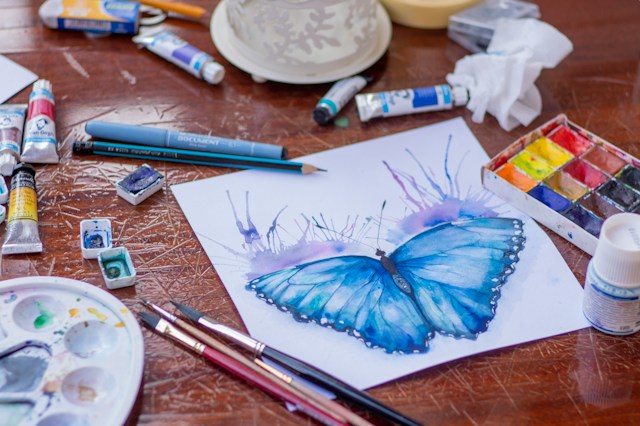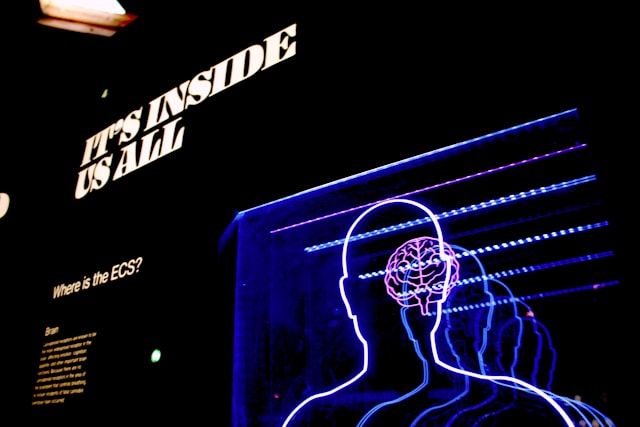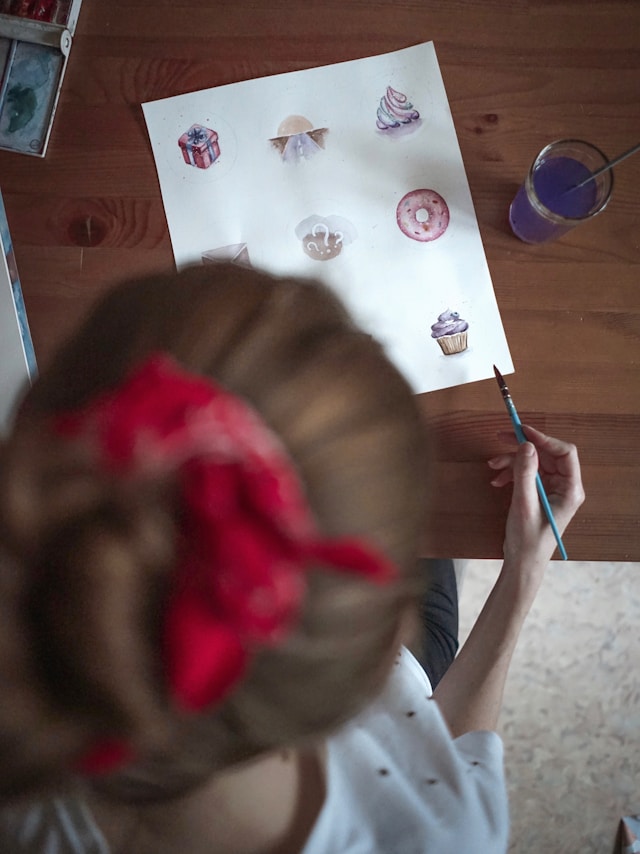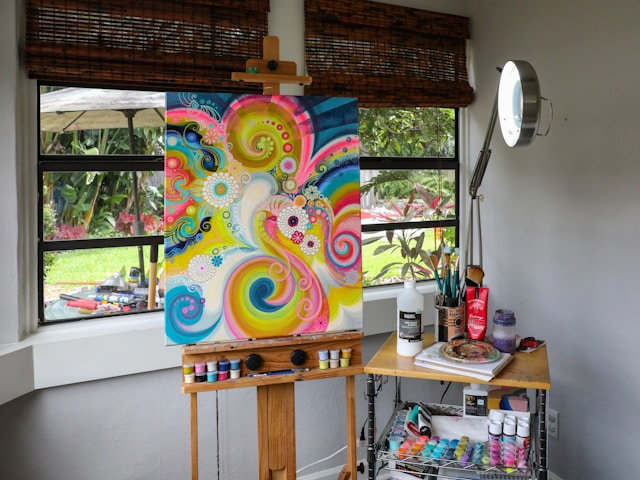Throughout history, humans have turned to art for solace and self-understanding. The Smithsonian National Museum of Natural History states that humans began crafting musical instruments and creating two- and three-dimensional representations of their surroundings as far back as 40,000 years ago.
Formalized art therapy emerged in Western Europe and North America in the mid-20th century, gained recognition in the 1940s and 1950s and formal organization in the 1960s.
Art therapy is advancing with the integration of brain imaging technologies, offering new insights into its effectiveness.

How Art Therapy Works
Art therapy taps into creativity to explore inner thoughts and emotions, potentially facilitating transformation under challenging conditions. Unlike traditional talk therapy, it bypasses language barriers, relying on sensory and symbolic tools.
Studies show that art therapy engages various brain functions related to creativity, cognition, and emotions, fostering neuroplasticity—the brain’s ability to adapt and change.
In conclusion, art therapy offers a unique approach to mental health, promoting positive neuroplasticity and aiding in emotional processing and communication.

Variety of Mediums in Art Therapy
Visual art therapy encompasses a range of mediums, offering diverse avenues for therapeutic expression. Here are several mediums your therapist might suggest exploring during a session:
- Painting
- Paper Crafts
- Collage
- Sculpture
- Weaving
- Scribbling
- Visual journaling
These options provide individuals various ways to engage in the therapeutic process and express themselves visually.
Is Art Therapy Scientifically Proven
Art therapy seamlessly merges art and science, dispelling the misconception of their opposition. Ongoing research demonstrates the efficacy of art therapy across various applications, ranging from AIDS to Parkinson’s disease.
Studies published in the American Journal of Art Therapy affirm the benefits of art and art therapy for individuals with mental health issues. A comprehensive review of 27 reports revealed significant positive impacts for clinical populations, including cancer patients, trauma survivors, individuals with mental health or substance use disorders, prison inmates, elderly individuals, and others facing daily challenges.
Clients grappling with emotional trauma, violence, abuse, anxiety, depression, and other psychological difficulties often find solace in art therapy.

While art therapy is a recognized profession with specialized training programs, ongoing scientific inquiry continues to explore its full potential. Some hypotheses, such as the notion that different art media activate distinct brain regions, await conclusive evidence. Researchers suggest that mediums like watercolor or clay may tap into emotional centers, while technical activities requiring measurement or three-dimensional construction engage cognitive processes.
Many mental health professionals believe patients’ artwork conveys symbolic meanings, reflecting memories and emotions inaccessible through words alone. Although case studies support the effectiveness of these treatments, the multifaceted nature of art therapy poses challenges for isolated scientific investigations.
Because art therapy engages diverse brain regions and processes, pinpointing specific areas for study remains complex. Untangling art therapy’s visual, cognitive, and motor aspects presents a significant research challenge.
Who Might Benefit from Art Therapy

Art therapy is widely regarded as beneficial for a diverse range of individuals. “It’s very effective,” notes Rubin, drawing from her clinical experience, and she wishes its benefits were more widely recognized.
Art therapy could offer relief, regardless of your artistic abilities, if you feel overwhelmed or stressed.
Specific groups that may particularly benefit from art therapy include:
- Those hesitant about traditional talk therapy, especially individuals with trauma or anxiety, prefer alternative approaches.
- Individuals who have reached a plateau in talk therapy and seek new avenues for self-expression.
- Nonverbal patients, such as those with autism or Parkinson’s disease, can communicate through art.
- People with physical limitations, including blindness or paralysis, can still engage in art therapy with appropriate accommodations.
- Children may find it easier to express emotions through art than verbally.
- Families, couples, and groups can benefit from the shared art-making experience and gain insights through collaborative activities.
- Art therapy offers a flexible and inclusive approach to mental well-being, accommodating various needs and preferences.
Art Therapy Accessibility
Art therapy sessions typically last 50 to 60 minutes. Private one-on-one sessions may range from approximately $100 to $200 per session, varying based on the therapist’s rates. Group sessions generally cost about half as much. Additionally, if you’re working with a licensed therapist, insurance coverage may partially or wholly offset the expenses, depending on your provider.
Understanding Art Therapy
Art therapy harnesses the power of creative expression to delve into inner thoughts, feelings, and experiences, potentially transforming challenging emotional and physical conditions. Unlike traditional talk therapy, it circumvents language barriers, relying instead on kinesthetic, sensory, perceptual, and symbolic tools, as highlighted by AATA.
Rather than diagnosing problems, art therapy focuses on identifying strengths and constructive elements. Incorporating art creation allows patients to access and process emotions, offering a pleasurable or healing component to therapy, akin to “sugarcoating the pill,” according to Rubin’s clinical experience.

While creativity is often associated with the brain’s right hemisphere, various regions, including the frontal cortex, hippocampus, and basal ganglia, are involved in art therapy, as noted in previous research.
Art therapy engages multiple brain functions linked to creativity, cognition, emotions, and intuition, fostering neuroplasticity—the brain’s capacity to adapt and change in response to stimuli or experiences.
Neuroplasticity facilitates the rewiring of neural pathways, enabling individuals to modify standard responses. This process underpins many mental health interventions, aiding in overcoming trauma and altering behaviors.
Researchers have found that art promotes positive neuroplasticity by evoking emotions, stimulating cognition, and enabling communication, as outlined in a 2019 Frontiers in Human Neuroscience article by scholars from Indiana University and Drexel University.
Recommended Art Therapy Resources

Top Websites:
Art Therapy Credentials Board (ATCB)
ATCB serves as a comprehensive directory of accredited art therapists. Quickly locate therapists by location or certification type.
American Art Therapy Association (AATA)
A leading global membership association in art therapy, AATA offers a wealth of informational resources and access to events and conferences, some of which are open to the public.
Neuro Arts Blueprint Initiative:
A collaborative effort with Johns Hopkins International Arts and Mind Lab Center for Applied Neuroaesthetics and the Aspen Institute’s Health, Medicine, and Society Program. This initiative focuses on collecting cutting-edge scientific data demonstrating the effects of expressive arts on the brain.
Best Books:
Expressive Therapies Continuum – A Framework for Using Art in Therapy
This clinical resource delves into how art therapy impacts the brain. Ideal for students and practitioners, it features clinical insights and case studies.
Inward Journey — Art as Therapy
Despite being published in 1985, this book remains relevant for those new to expressive therapeutic approaches. It offers valuable insights into the healing potential of art therapy.
Top Videos:
Sand Mandalas
Explore mesmerizing time-lapse videos showcasing the creation and destruction of mandalas by spiritual groups. These videos provide a captivating visual representation of the process of letting go.
